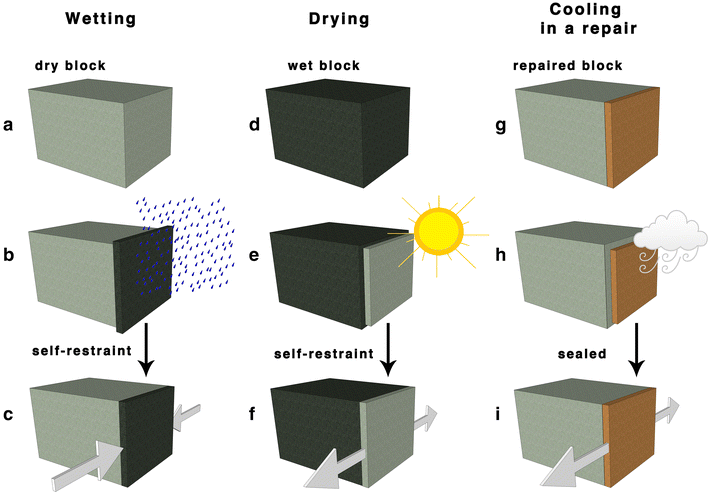Heritage Science
The conservation of cultural heritage and in particular of stone is an area with many interesting and challenging problems of materials science. Objects in stone present interesting analogies to cementitious materials in the sense that both are porous mineral materials, exposed to similar environments.
However, stones are most often characterized by lower and much coarser porosity than cementitious materials. This makes them better candidates for modifying their internal surface, for instance to enhance their durability [external page Scherer et al. (2001)]. One area of stone conservation of particular interest to Switzerland and where surface science is very relevant is the swelling of clay minerals. Indeed, expansive clays render almost all consolidation treatments inefficient on molasses from the Swiss plateau [Félix (1988, 1994), Jimenez-Gonzalez (2008)]. However, it has recently been found that combinations of swelling inhibitors and consolidants show a strong and very beneficial synergy [Jimenez-Gonzalez (2008)]. The reason for this is unknown and basic research in this area would help to identify durable consolidation treatments for many monuments in Switzerland.
An important question in preservation science concerns the reliability of repair interventions. Good intentions of researchers are often met with skepticism of field practitioners, who all-too-often have seen undesirable outcomes of new treatments. Stimulating a constructive exchange between communities in this regard is essential and something that we have promoted in particular for stone consolidants [external page Praticò et al. (2020)]. An important issue here concerns the reliability of conditions used for testing the durability of repair treatments, as their degradation must be accelerated without changing its nature. This has represented an active area of recent research in which we will continue to be active.
Reference:
Scherer G.W., Flatt R.J. and Wheeler G.W. “Materials science research for the conservation of sculpture and monuments” Mat. Res. Bull., 26 [1] (2001) 44-50.
Félix, C. (1988): “Comportement des grès en construction sur le plateau suisse (Performance of Sandstones in Construction on the Swiss Plateau)”. In LCP Publications 1975-1995, Montreux, R. Pancella Ed., EPFL, 833-841
Félix, C. (1994): “Déformation des grès consecutive à leur consolidation avec un silicate d’ethyle”, In 7th Int. Congress of the association of engineering geology, Lisboa, Ed. R. Oliveria, L.F. Rodrigues, A.G. Coehlo and A.P. Cunha,. Rohterdam: A.A. Balkema, 3543-50Flatt R.J. Schober I., Raphael E., Plassard C., and Lesniewska E. “Conformation of Adsorbed Comb Copolymer Dispersants”, Langmuir, 2009, 25 (2), 845-855.
Jimenez-Gonzalez I. Efecto de los ciclos de humedad-sequedad en el deterioro de rocas ornamentales que contienen minerales de la arcilla (Effect of wetting and drying cycles on the deterioration of clay-bearing stones), PhD University of Granada, 2008.
Praticò, Y., Caruso, F., Delgado Rodrigues, J., Girardet, F., Sassoni, E., Scherer, G. W., Vergès-Belmin, V., Weiss, N. R., Wheeler, G. and Flatt, R. J. (2020) “Stone consolidation: a critical discussion of theoretical insights and field practice”, RILEM Technical Letters, 40, pp. 145-153. doi: 10.21809/rilemtechlett.2019.101.
